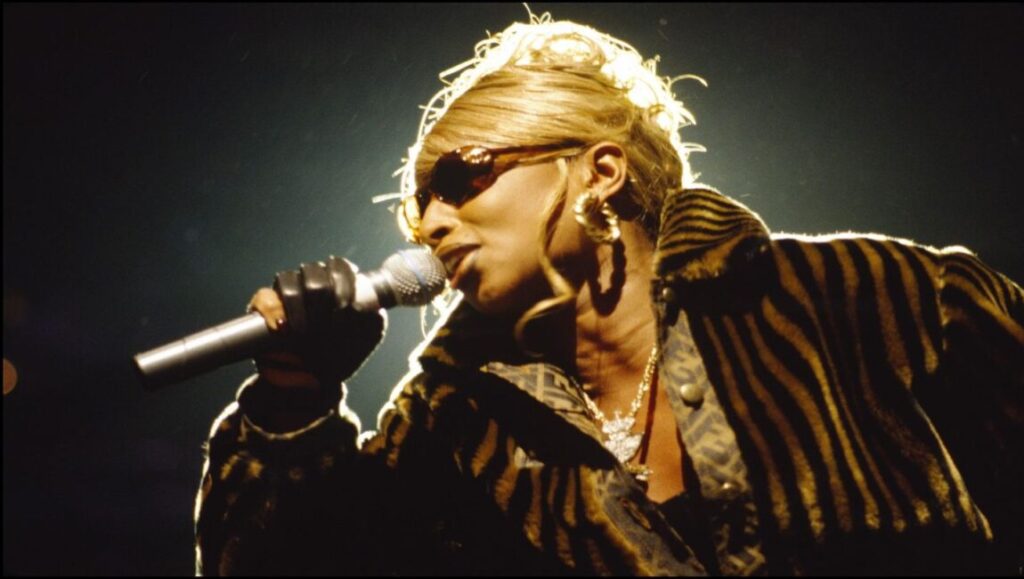After writing the early blueprint for ’90s R&B, Mary J. Blige laid out her own musical foundations on 1994’s My Life. The influence of hip-hop began to seep into R&B by the end of the ’80s — a period that soon saw Bell Biv Devoe incorporate rap’s swagger in the era-defining “Poison” — and Mary J. Blige solidified the pop hybrid into a defined form for the next generation to follow in her 1992 debut What’s the 411? Her first outing marked a point in history when New Jack Swing’s chunky drum-machine snaps simmered into the chillness of boom-bap. Blige proved her schooling from soul classics while effortlessly trading bars on the title track alongside Grand Puba of Brand Nubian; her hip-hop cool naturally attracted the Notorious B.I.G., then a fresh young signing mainly hyped by Sean “Puffy” Combs, executive producer of What’s the 411? and My Life. While the rap cadences take a backseat in her follow-up, the debut’s sample-based approach — to name a few noteworthy examples, “Real Love” swipes its drums from Audio Two’s timeless “Top Billin’” and “What’s the 411?” loops the collapsing intro of Ohio Player’s “Pride and Vanity” — plays a much more significant part to tell the author’s deeply personal story. Each referenced record feels connected to Blige’s own upbringing in some way, either directly highlighting her influences such as Curtis Mayfield, Rick James and Guy, or echoing the message of her heroes: the chorus of “My Life” interpolates the titular refrain of Roy Ayer’s “Everybody Loves the Sunshine” to passionately preach the power of faith.
While she merely searched for love in What’s the 411?, daydreaming what real love possibly could be like, My Life presents a woman who not only experienced an invaluable relationship but who’s also mourning its loss.
Blige turns to her treasure trove of soul and R&B records for creative inspiration but also for a spiritual escape from heartbreak. The looped riffs from Isaac Hayes and Al Green provide her a sense of safety and stability as she readies herself before singing about her most tragic romantic fallout. In the case of “No One Else,” she lets a favorite single of hers speak on her behalf: “There is no competition,” echoes Slick Rick from “La Di Da Di” as Blige laments about an irreplaceable former partner. While she merely searched for love in What’s the 411?, daydreaming what real love possibly could be like, My Life presents a woman who not only experienced an invaluable relationship but who’s also mourning its loss. Her grief feels catastrophic as she intensely pours her love in one direction during the front half of the album. Her songs about devotion resonate so passionately that it sometimes blurs the line between the romantic and religious: “My Life” and “You Gotta Believe” work as gospel hymns as much as love letters, with faith being key to personal salvation. Emotions fully guide the rhymes and cadences which flow out of Blige like a stream of consciousness as she works out her pain in real time, looking deep into her wounds from the outside in. The refrain of “I’m the Only Woman” in particular — “don’t be a fool like your daddy/ I just want you to be happy” — sticks out as a stark self-directive that also reveals a sliver of private history. She pleads one final time for her love to come back in “I Love You,” not ready to fully accept its end. “You just don’t understand good love/ but now all we have is memories,” she bitterly sings in the bridge as she fails to shake off her lover’s presence. From how intensely she pours forth her devotion, it’s not hard to imagine the memory of Blige’s former flame deeply stitched into not only the fabric of her songs but also the grooves of her favorite records helping her exhume her pain. My Life documents the singer at her darkest, with her most personal music summoning the worst ghosts, but Mary J. Blige crafted her private R&B masterpiece by courageously bearing it all.
Part of Kicking the Canon – The Album Canon.


Comments are closed.